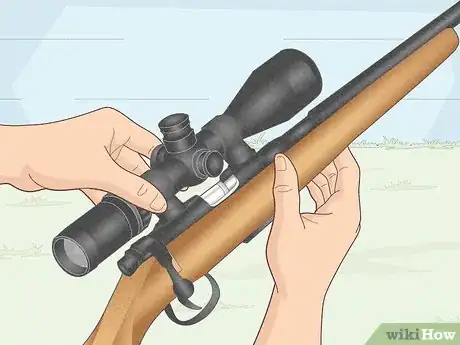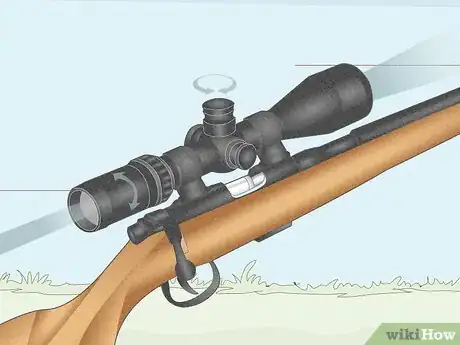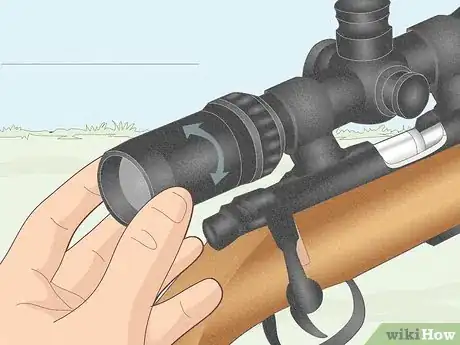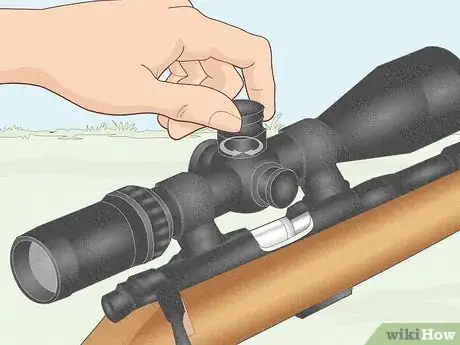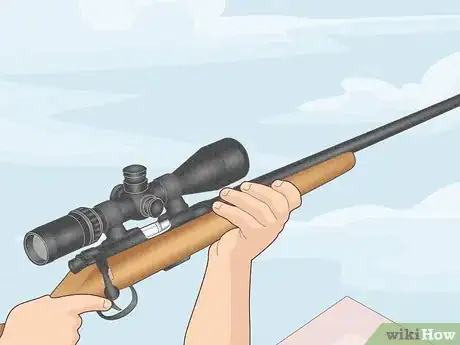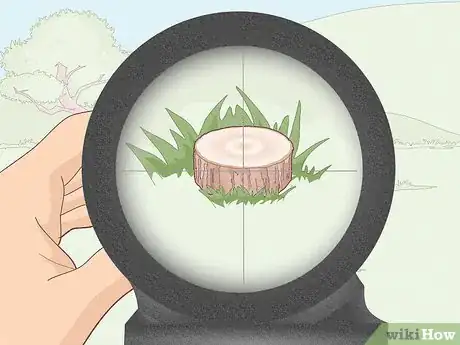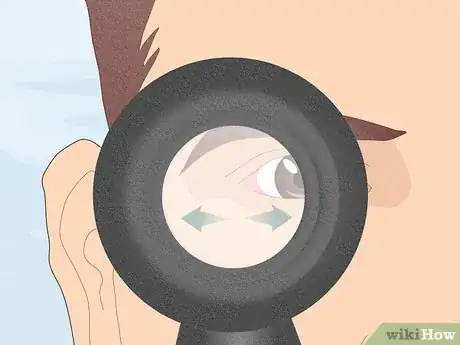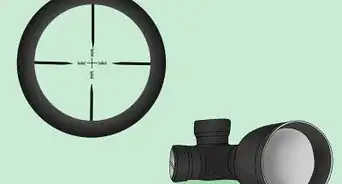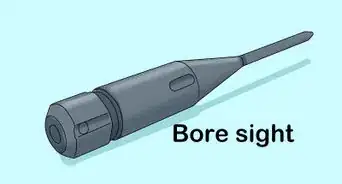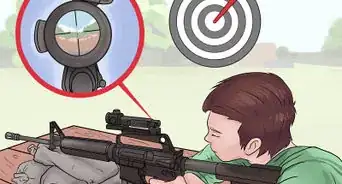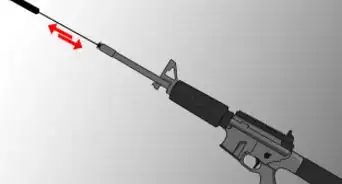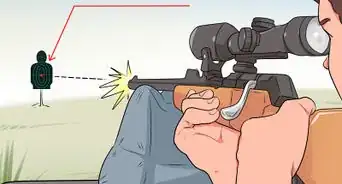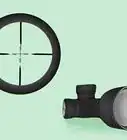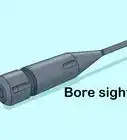X
wikiHow is a “wiki,” similar to Wikipedia, which means that many of our articles are co-written by multiple authors. To create this article, 12 people, some anonymous, worked to edit and improve it over time.
This article has been viewed 94,847 times.
Learn more...
Adjustable Objective (AO) rifle scopes are designed to allow the shooter to focus on the target. There are three main advantages: The target is in-focus, being in-focus will eliminate parallax (movement of the point of aim when the shooter shifts the eye position), and the range information on the focus knob can be used for better aiming.
Steps
-
1Be sure that your scope is mounted properly.[1] Sighting-in can have been done preliminarily, but additional sighting-in will be desirable after following these steps:
-
2Know your rifle. There are actually two optical systems in a rifle scope. The objective (front lens) focuses the target image on the reticle (cross-hairs); the eyepiece (rear lens) focuses the eye on the reticle.[2] The eyepiece must first be adjusted before any adjustment of the objective.Advertisement
-
3Most eyepieces have a lock ring. Unscrew the lock ring a turn or two so that the eyepiece can be screwed in and out.[3]
-
4Adjust the objective for infinity (very far, often a small 8 symbol). This will cause anything you actually look at that is close to be very blurry.
-
5Point the scope toward a blank wall or the sky.[4] At this stage, we are only interested in focusing the eyepiece on the reticle and not on any actual target. Screw the eyepiece in/out until the reticle is in sharp focus. This may take several tries with removing your eye from the eyepiece between tries to give it a rest.
-
6Once the eyepiece has a sharp reticle image, lock the eyepiece adjustment with the lock ring.[5] (This does not have to be more than just snug.)
-
7Adjust the objective. Now that we have a clear image of the reticle, the distant target image can be focused on the reticle. In practice, you will think that you are focusing the image on your eye, but what is actually happening is that the image is being focused on the reticle. Most objectives focus by turning the front lens. Some focus by turning a knob on the side of the scope. In any case, the idea is to get a sharp image of the target. It will be easier to focus if you choose a target area with some contrasting texture such as wood grain - you will see the image "pop" into focus better on patterns than on large areas.
-
8You should now be able to move your eye from side-to-side while the rifle stays still and the cross-hairs of the reticle should not move on the target.[6] This means you have eliminated parallax from your scope system for this target. If the distance to the target changes, you only refocus the front objective (or side focus). You never touch the eyepiece adjustment unless your prescription changes, basically.
Advertisement
Community Q&A
-
QuestionDoes the Norinco 3-9X40 scope with fixed objective lens need parallax adjustment for a 10 meter target with lower magnification if it is zeroed for 30 meters? If yes, then how can it be done?
 Community AnswerA fixed objective lens scope has a parallax free distance. Changing magnification does not effect that parallax free distance. Changing that distance requires moving the objective lens in or out in the tube. If you do that yourself, you'll void any warranty and perhaps allow dust and moisture inside. Fogged scopes are useless.
Community AnswerA fixed objective lens scope has a parallax free distance. Changing magnification does not effect that parallax free distance. Changing that distance requires moving the objective lens in or out in the tube. If you do that yourself, you'll void any warranty and perhaps allow dust and moisture inside. Fogged scopes are useless. -
QuestionShould I be able to put on and use a rifle scope with A.O. on my muzzle loader without any problems?
 Community AnswerYes, although an A.O. is usually not necessary for muzzle loaders, because the shooting distance isn't long enough to require a scope with an A.O. Be sure when mounting the scope that the A.O. has clearance between it and the barrel of the muzzle loader.
Community AnswerYes, although an A.O. is usually not necessary for muzzle loaders, because the shooting distance isn't long enough to require a scope with an A.O. Be sure when mounting the scope that the A.O. has clearance between it and the barrel of the muzzle loader.
Advertisement
Warnings
- Never assume a gun is unloaded -- check this before working on the gun.⧼thumbs_response⧽
- Use empty chamber indicators.⧼thumbs_response⧽
- Follow all firearm safety rules.⧼thumbs_response⧽
- Keep the gun pointing in a safe direction when possible.⧼thumbs_response⧽
Advertisement
References
- ↑ https://www.youtube.com/watch?v=8rFOtmWqBUI
- ↑ https://www.leupold.com/leupold-core/core-knowledge/articles/front-focal-plane-optics-vs-rear-focal-plane-optics
- ↑ https://www.opticsplanet.com/howto/how-to-what-you-need-to-know-about-rifle-scope-reticles.html
- ↑ https://www.ammoland.com/2015/08/rifle-scope-parallax-adjustment-video/#axzz6EIRCvMlE
- ↑ https://www.youtube.com/watch?v=z5LeAu-CYso
- ↑ https://www.youtube.com/watch?v=z5LeAu-CYso
About This Article
Advertisement
